- Art.Salon
- Artists
- George Stubbs
- The Anatomy of the Horse. London: J. Purser for the author, 1766.

Stubbs, George
The Anatomy of the Horse. London: J. Purser for the author, 1766.
Found at
Christies,
New York
The Collection of Arthur & Charlotte Vershbow Part Three: The Baroque and Rococo Periods, Lot 704
20. Jun - 20. Jun 2013
The Collection of Arthur & Charlotte Vershbow Part Three: The Baroque and Rococo Periods, Lot 704
20. Jun - 20. Jun 2013
Estimate: XX.XXX
Price realised: XX.XXX
Price realised: XX.XXX
Description
STUBBS, George (1724-1806). The Anatomy of the Horse. London: J. Purser for the author, 1766.
Oblong imperial broadsheets (454 x 590 mm). With the errata leaf at end present (often lacking). 24 finely engraved plates drawn and engraved by Stubbs (some foxing and browning). (Title-page and 'To the Reader' leaves creased, some offsetting from plates.) Contemporary boards (leather spine and corners renewed). Provenance: acquired from Paul Grinke, 1971.
FIRST EDITION OF THIS LANDMARK WORK IN THE STUDY OF EQUINE ANATOMY. Using the method devised by Albinus, Stubbs accurately reproduced the skeleton and musculature to produce the first comprehensive study of the anatomy of the horse since Carlo Ruini's Dell'anatomica, et dell'infirmita del cavallo published in 1598 (see lot 679). Stubbs's drawings for the plates were executed between 1756 and 1759, and were based on numerous dissections that he had performed himself, keeping each carcass in his studio for up to six or seven weeks. Once the drawings were finished, Stubbs unsuccessfully attempted to find an engraver, but many engravers felt the subjects of the plates fell beyond their knowledge, forcing him to engrave them himself over the following six years, thus effecting his transformation from an engraver of limited ability to one of great skill. When the work was published, it caused the artist "henceforth to be regarded primarily as an animal painter, whereas his previous provincia
The text was probably printed at the time of publication, but the plates appear to have been printed on demand as copies were sold, and copies with plates watermarked with dates from 1798 to 1827 are known; Lennox-Boyd notes that 'in copies ... issued in 1766, and in most of those sold in Stubbs's lifetime, both the letterpress and the plates were printed on laid paper', and in later copies the plates were printed on wove paper. EARLY ISSUE: this copy with the plates on laid paper, and containing the errata slip (pasted on verso of the last leaf), which is generally only found in early-issue copies. The paper stock of the plates in this copy corresponds with the paper stock of the copy in the Mellon collection with none of the plate-paper dated, and several watermarked "T. Dupuy, Auvergne."
Brunet V:571; Dingley Comben 600 (later issue, plates watermarked 1823); Eales Cole ... 1472-1800 1840; ESTC T147211; Garrison and Morton 308.1; Lennox-Boyd Stubbs, pp. 165-188; Mellon Books on the Horse and Horsemanship 57; Nissen ZBI 4027; Norman 2032 (later issue, plates watermarked '1798').
Oblong imperial broadsheets (454 x 590 mm). With the errata leaf at end present (often lacking). 24 finely engraved plates drawn and engraved by Stubbs (some foxing and browning). (Title-page and 'To the Reader' leaves creased, some offsetting from plates.) Contemporary boards (leather spine and corners renewed). Provenance: acquired from Paul Grinke, 1971.
FIRST EDITION OF THIS LANDMARK WORK IN THE STUDY OF EQUINE ANATOMY. Using the method devised by Albinus, Stubbs accurately reproduced the skeleton and musculature to produce the first comprehensive study of the anatomy of the horse since Carlo Ruini's Dell'anatomica, et dell'infirmita del cavallo published in 1598 (see lot 679). Stubbs's drawings for the plates were executed between 1756 and 1759, and were based on numerous dissections that he had performed himself, keeping each carcass in his studio for up to six or seven weeks. Once the drawings were finished, Stubbs unsuccessfully attempted to find an engraver, but many engravers felt the subjects of the plates fell beyond their knowledge, forcing him to engrave them himself over the following six years, thus effecting his transformation from an engraver of limited ability to one of great skill. When the work was published, it caused the artist "henceforth to be regarded primarily as an animal painter, whereas his previous provincia
The text was probably printed at the time of publication, but the plates appear to have been printed on demand as copies were sold, and copies with plates watermarked with dates from 1798 to 1827 are known; Lennox-Boyd notes that 'in copies ... issued in 1766, and in most of those sold in Stubbs's lifetime, both the letterpress and the plates were printed on laid paper', and in later copies the plates were printed on wove paper. EARLY ISSUE: this copy with the plates on laid paper, and containing the errata slip (pasted on verso of the last leaf), which is generally only found in early-issue copies. The paper stock of the plates in this copy corresponds with the paper stock of the copy in the Mellon collection with none of the plate-paper dated, and several watermarked "T. Dupuy, Auvergne."
Brunet V:571; Dingley Comben 600 (later issue, plates watermarked 1823); Eales Cole ... 1472-1800 1840; ESTC T147211; Garrison and Morton 308.1; Lennox-Boyd Stubbs, pp. 165-188; Mellon Books on the Horse and Horsemanship 57; Nissen ZBI 4027; Norman 2032 (later issue, plates watermarked '1798').
Upper estimate price exceeded by more than 100%
This artwork by George Stubbs achieved an unexpectedly high price at Christies in New York in June 2013. In the The Collection of Arthur & Charlotte Vershbow Part Three: The Baroque and Rococo Periods auction, the work The Anatomy of the Horse. London: J. Purser for the author, 1766. sold for USD 50,000.00 (€ 38,431.98) - well above the upper estimate of USD 20,000.00. Of course, this price has nothing to do with the top prices that other works by George Stubbs achieve. The highest price we have observed so far was reached by the work Gimcrack on Newmarket Heath, with a trainer, a jockey and a stable lad in July 2011 with an auction result of GBP 22,441,250.00 (€ 25,754,691.64).
Oberer Schätzpreis um mehr als 100% übertroffen
Dieses Kunstwerk von George Stubbs erzielte im Juni 2013 bei Christies in New York einen unerwartet hohen Preis. In der Auktion The Collection of Arthur & Charlotte Vershbow Part Three: The Baroque and Rococo Periods wurde die Arbeit The Anatomy of the Horse. London: J. Purser for the author, 1766. für USD 50.000,00 (€ 38.431,98) versteigert – und damit weit über dem oberen Schätzpreis von USD 20.000,00. Dieser Preis hat freilich nichts mit den Spitzenpreisen zu tun, die andere Arbeiten von George Stubbs erzielen. Den höchsten von uns bisher beobachteten Preis erreichte die Arbeit Gimcrack on Newmarket Heath, with a trainer, a jockey and a stable lad im Juli 2011 mit einem Auktionsergebnis von GBP 22.441.250,00 (€ 25.754.691,64).

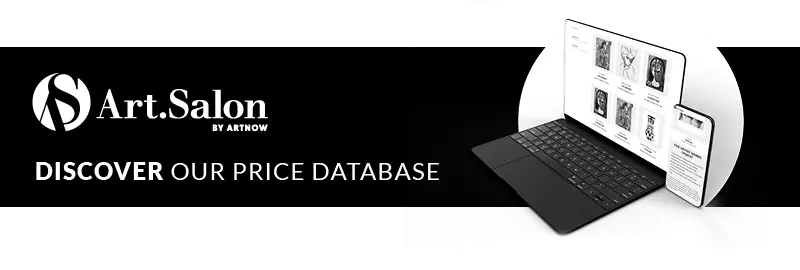


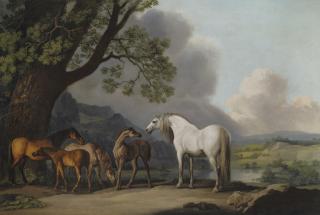
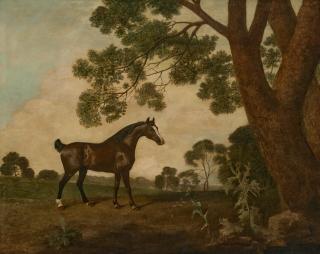
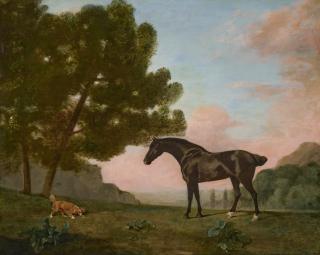










![Bibiena, Giuseppe Galli Da - Architetture, e prospettive, dedicate alla Maest di Carlo Sesto. Augsburg: Andreas Pfeffel, 1740[-1744].](/images/bibiena-giuseppe-galli-da_architetture-e-prospettive-dedicate-alla-maest-di-carlo-sesto-augsburg-andreas-pfeffel-1740-1744_AID574664_320x320.jpg)

![Androuet Du Cerceau, Jacques - Livre Des Edifices Antiques Romains. [Paris], 1584.](/images/androuet-du-cerceau-jacques_livre-des-edifices-antiques-romains-paris-1584_AID574653_320x320.jpg)












![Oppenord, Gilles-Marie - Oeuvres... contenant différents fragments d\'architecture, et d\'ornement. Paris: Gabriel Huquier, [ca 1748].](/images/oppenord-gilles-marie_oeuvres-contenant-differents-fragments-darchitecture-et-dornement-paris-gabriel-huquier-ca-1748_AID574773_320x320.jpg)



![La Joüe, Jacques De - Livre de Buffets. Paris: Huquier, [ca.1750].](/images/la-jouee-jacques-de_livre-de-buffets-paris-huquier-ca-1750_AID574752_320x320.jpg)
![La Fontaine, Jean De - Contes et Nouvelles en vers. Amsterdam [Paris: David Jeune], 1762.](/images/la-fontaine-jean-de_contes-et-nouvelles-en-vers-amsterdam-paris-david-jeune-1762_AID574750_320x320.jpg)

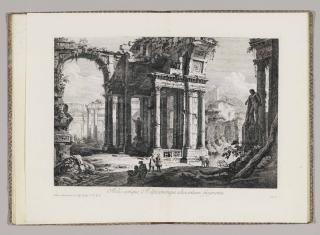



![Delaune, Etienne - Hunting Scenes [Venationes] (Robert-Dumesnil 275-280)](/images/delaune-etienne_hunting-scenes-venationes-robert-dumesnil-275-280_AID574705_320x320.jpg)






